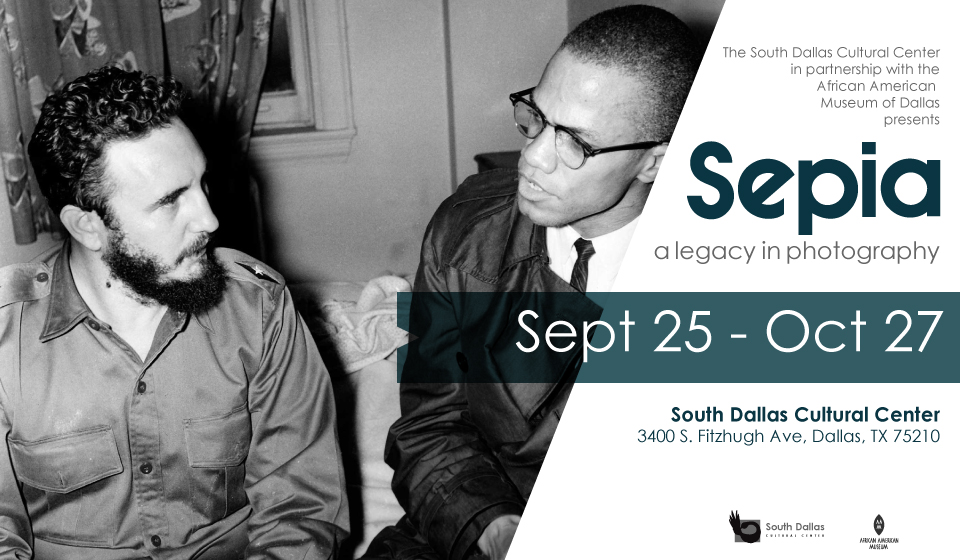“Sepia magazine began in Fort Worth, Texas in 1947 as Negro Achievements, a magazine highlighting African American success articles and featuring reader-submitted true confessions stories. In 1951, two years after the death of its black founder, Horace J. Blackwell, Sepia found new leadership in white business mogul, George Levitan. With Levitan’s guidance, the magazine became the longest standing competitor to the more successful African American magazine, Ebony.”
- Mia L Anderson, Ph.D. Seeking a Place in the Sun, Sepia Magazine’s Endeavor for Quality Journalism and Place in the Negro Market, 1951-1982
Exhibition Info:
"Sepia - a legacy in photography" will run until October 27th at the South Dallas Cultural Center.
Visit our website for the Center's hours of operation. http://sdcc.dallasculture.org/book-an-event/visit/
History of Sepia Magazine:
Horace J. Blackwell, a black entrepreneur, set out to create a publication company that produced a true confessions tabloid magazine for African Americans. His first endeavor was The World’s Messenger in 1942 and was one of only two publications distributed regionally for African Americans. Blackwell’s success with The World’s Messenger, led to his 1946 production of Negro Achievements. John H. Johnson’s new publication, Ebonymagazine in 1945, was also influential in Blackwell’s creation of the additional magazine. This new publication would provide an alternative for Blackwell’s regional audience. Blackwell died in 1949 of a stroke, but left intact a publication company that changed ownership to a new leader.
In 1951, George Levitan purchased Negro Achievements and changed the name of the magazine to Sepia. The publication focused primarily on various aspects of African American culture, including religion, civil rights, education, entertainment, and politics. With the objective of fostering leadership, the magazine also published articles on the development of Black institutions, including colleges and universities.
Sepia had a circulation of approximately 160,000 in 1982, which was its final year of publication. Beatrice Pringle one of the first African American women publishers was its last publisher and left the magazine 1981. The Sepia Photographic Archive is one of the most valuable resources of African American achievement in the world, and is an immense catalogue of American culture and history. The archive contains over 10,000 photographs, and is one of the most important collections of historical photography ever amassed. The Sepia Photographic Archive is the property of the African American Museum in Dallas, TX.






COMMENTS